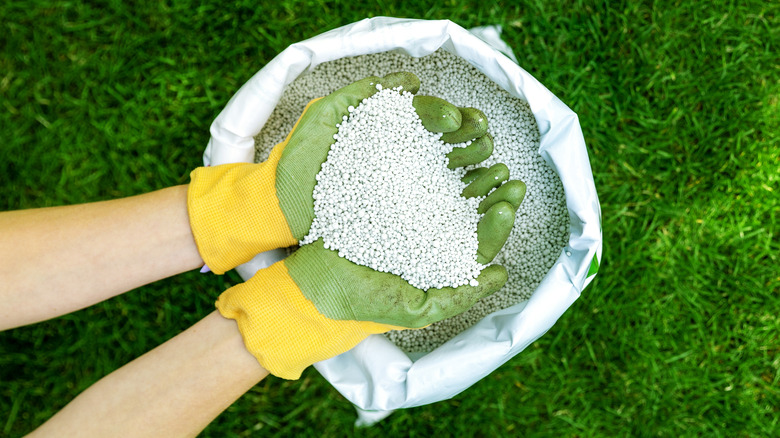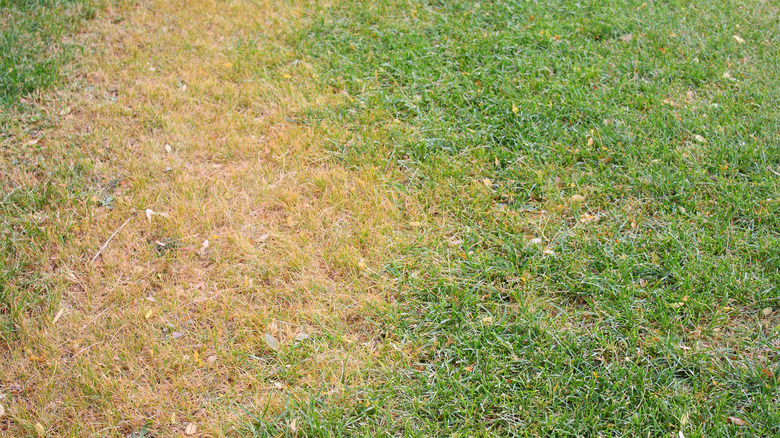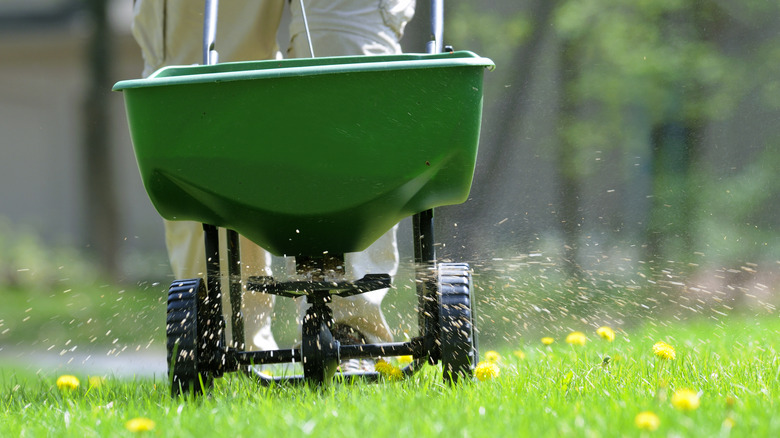Can You Over-Fertilize Your Lawn?
Fertilizing your lawn is a key means of providing the nutrients that your grass needs to stay healthy. Unfortunately, it is possible to over-fertilize your lawn and give it too much of a good thing. Just like it's not healthy for a human to eat too much of one kind of food, it's not beneficial for grass to receive a far higher concentration of a certain nutrient than it actually needs. In the worst case scenario, you could even kill the grass if you apply too much fertilizer. The key to avoiding problems is fertilizing the lawn at the right time and with the right concentration. The bag of fertilizer should give you directions on how to use the product safely to maintain a beautiful lawn.
Even though over-fertilization of the lawn is a possibility, the benefits of lawn fertilization greatly outweigh the potential problems. A properly fertilized lawn results in stronger plants that can choke out weeds, soil that's richer in nutrients, and a deep green color that makes your lawn look great. Although you could avoid over-fertilization issues by using natural ways to keep your lawn green, adding granules of traditional fertilizer is the fastest and easiest way to maintain the health of your grass. You just have to pay attention to the methods you're using to apply the fertilizer, ensuring that you perform the application safely and correctly.
Signs your lawn is over-fertilized
One of the most common signs of an over-fertilized lawn is the appearance of brown or yellow spots where the grass dies. Odd-colored streaks in the lawn are possible, too. These patches will appear a few days after a significant over-application of fertilizer, and the grass will feel dry to the touch. Such patches are only likely to occur in areas that received far too many granules of fertilizer, such as if you spilled some during the application or if a lot of granules washed into an area of the lawn because of poor drainage.
Understand that spots damaged by dog urine or grass that's going dormant for winter also may look brown and crispy, so don't panic if you see a few of these spots or an entirely brown lawn unless you suspect you've over-fertilized the lawn.
If you over-fertilize by applying too many granules per square foot across the entire lawn, small dead grass spots may not appear. Instead, you may notice the grass tips across the lawn turning brown or yellow. Large sections may be dying. The soil may have a grayish crust in a few spots over the dirt. You may see remnants of the granules in the lawn several days after application, even after rain or watering.
How to avoid an over-fertilized lawn
If you want to avoid giving your lawn too much fertilizer, you can take a few steps to fix the problem. Unfortunately, if the lawn already has crispy and brown spots, it's probably too late to save the grass. You may need to replant these spots.
A malfunctioning spreader is a common cause of an over-fertilized lawn. It's important to make sure the spreader's settings are accurate. Read the instructions for the fertilizer, which should tell you how much to apply per square foot. If a 40-pound bag should cover 8,000 square feet, you should use one pound per 200 square feet. Measure a 100-square-foot lawn space, preferably in an out-of-the-way area, and add 0.5 pounds of fertilizer to the spreader. Use this patch to test the accuracy of your spreader. If you run out of fertilizer after covering about 60 or 70 square feet, you have applied too much fertilizer. Adjust the spreader's settings before fertilizing the entire lawn.
Ensuring the lawn has enough water is an excellent way to counteract the effects of too much fertilizer. Additionally, fix any drainage issues causing fertilizer granules to collect in one area. If you spill a little fertilizer, you can use a broom to spread the granules across a far larger space. If you spill a lot, use a wet-dry vacuum to remove the excess granules.


